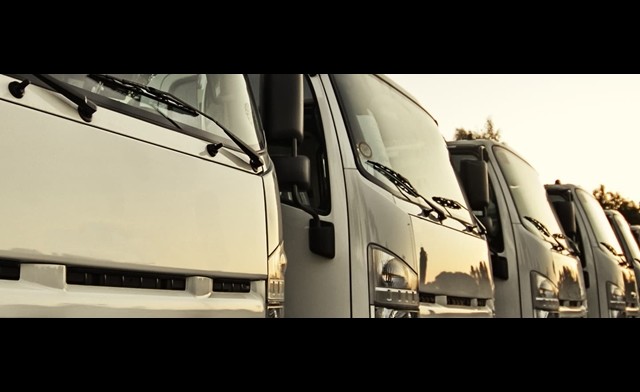Driving a Heavy Good Vehicle (HGV) is a big responsibility – a large vehicle that weighs over 3.5 tonnes can cause serious damage if involved in an accident, not just to your drivers, but to other road users too.
HGVs are five times more likely to be involved in a fatal accident than any other vehicle. It’s hugely important as a fleet manager to continue to work on preventative measures to reduce the likelihood of accidents.
Drivers’ safety is an absolute priority when managing a fleet of HGVs. And if risks aren’t managed properly, employers can face fines of up to £20,000 for breaching safety regulations.
In this post, Bluedrop Services, HGV Insurance specialists, present a few ways to prevent accidents and how to manage your HGV fleet risk.
How to manage and reduce your HGV fleet risk
There are a few ways to reduce the risk amongst drivers, from addressing weather conditions, health and safety of your fleet (incl. eye tests, mental health and physical health) and maintaining your HGV so they are regularly checked and serviced.
Healthy and safety is priority
HGV drivers typically drive for long periods, which means they often stay overnight away from home. With long stints out away from home and without a routine, exercise may not be a priority for some drivers and irregular working hours may impact their mental wellbeing.
The DVLA does have a set of medical standards that drivers need to meet for a person to be fit enough to drive. And for HGV drivers, the standards are much higher. Drivers will have to pass a medical exam before they can drive a large vehicle – this includes random drug and alcohol tests.
You can help to encourage your drivers to take better care of their health by offering work benefits packages. Work benefits can include discounts at gyms, private health care and opticians and focus on mental health training so that the drivers understand how to look after their mental wellbeing and know who to speak to if they are struggling.
Important factors such as lack of sleep, poor health and poor mental well-being can distract them from the job and therefore cause accidents. However, working to improve this will improve the overall safety of your fleet.
Check the health of your vehicles regularly
Apart from taking care of your drivers, you also need to look after your vehicles. Arranging regular vehicle maintenance checks to check the health of your vehicles will help prevent any dangerous breakdowns.
Even with scheduled maintenance, you should encourage your drivers to report any issues they are experiencing with the vehicle and do an inspection on the vehicle before making any trips by checking vehicle oil, water and ensuring they have enough fuel.
You may also want to invest in fleet management software to help you keep on top of vehicle maintenance and keep on top of the health of your fleet. More frequent repairs and maintenance checks may mean it’s time to replace the vehicle.
Improve driver behaviour
Your driver’s driving habit could be putting themselves and others at risk, from harsh braking, speeding and general carelessness. To help monitor your drivers, you can use tachographs or fleet technology.
A tachograph is a device that is fitted to a vehicle to monitor speed and distance. It keeps track of driver’s time to ensure drivers aren’t driving over the legal driving hours. It’s a legal requirement to instal a tachograph in HGV so you can keep track and comply with HGV driving regulations – such as HGV driving hours.
So that your drivers are fully aware of what the rules and regulations are and what is expected from them, you should provide drivers training. Thorough training should cover:
- Driving hours
- How to remain focused
- How to drive in various weather conditions
- How to drive efficiently and safely
Using the data from the tachograph should help indicate who needs additional training. Not only will this reduce your risk, but it will also make your HGV insurance premiums cheaper.
Have accident procedures in place
No matter what you put in place to prevent accidents from happening, sometimes they are unavoidable. In the event of an accident, the best thing you can do as a fleet manager is to have a procedure for drivers to follow if an accident occurs.
Ideally, you should communicate the procedures clearly when onboarding new drivers. Your drivers should be confident with what to do and the steps they need to take if involved in an accident, even if it doesn’t involve another road user.
Additional extras to manage risk
There are other measures you can put in place to manage and reduce HGV driving risks. These include:
- Hands-free systems for HGV drivers
- Planning the route and make journeys during quieter periods to avoid rush hour
- Keep updated with the weather, especially if it is forecast snow or if there are strong winds and heavy rain
- Update policies and training to make drivers aware of how to drive safely and what is expected of them
Keeping on top of training, vehicle maintenance and driver’s behaviour will help to reduce your risk and even save your fleet money, especially in fuel and Haulage insurance premiums.
